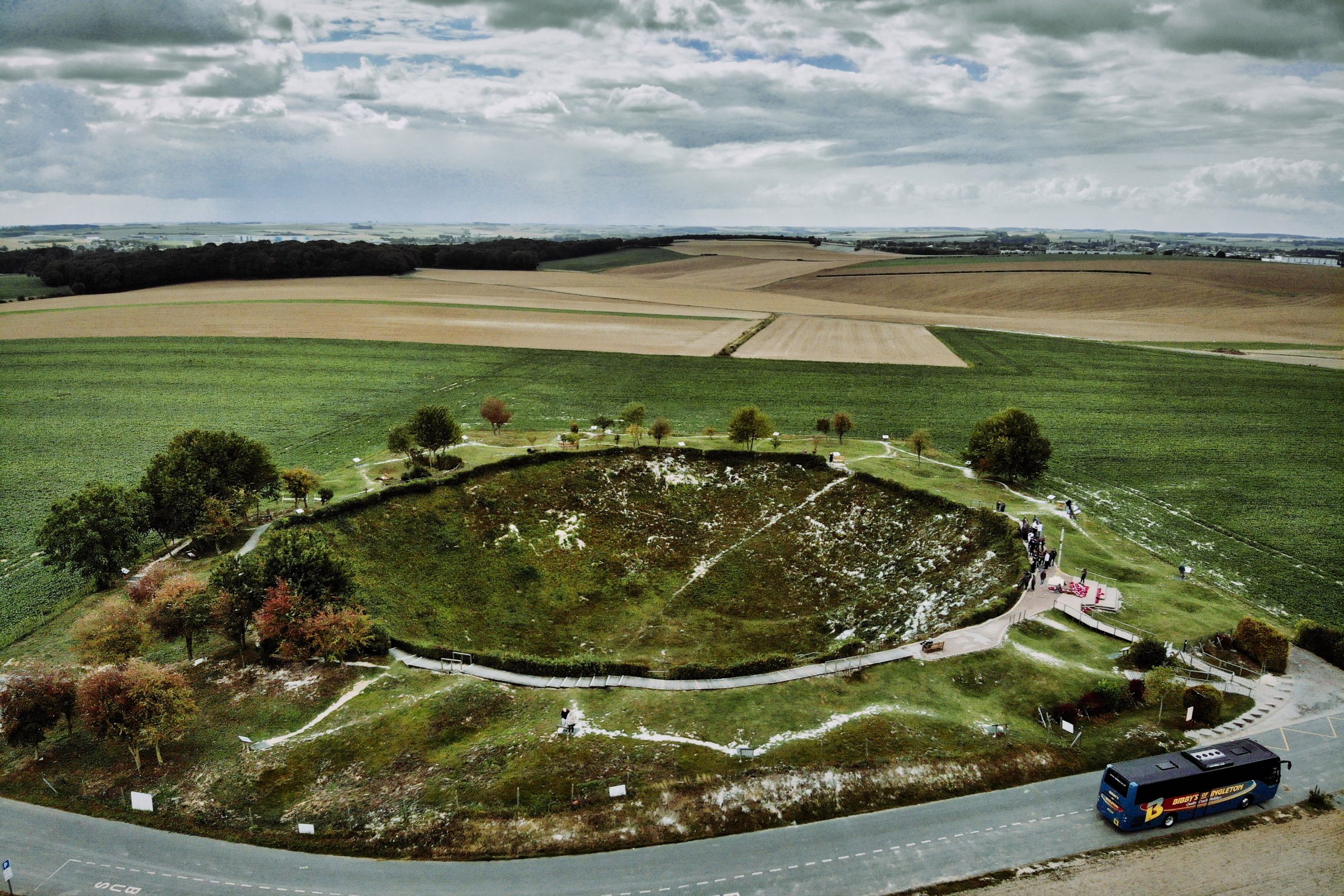Introduction
In the serene fields near La Boisselle, France, lies a dramatic reminder of one of World War I’s most intense and devastating battles—the Lochnagar Crater. This massive crater, a product of extraordinary wartime engineering, remains a significant symbol of the British Army’s efforts to break through fortified German positions on the first day of the Battle of the Somme. Over a century later, the crater stands as a memorial, echoing the immense sacrifice and relentless determination of those who fought.

A Strategic Operation in the Trenches
The creation of the Lochnagar Crater was part of a carefully orchestrated plan by British forces to weaken German defenses. To achieve this, British tunneling units undertook the complex and hazardous task of digging a shaft over 15 meters (50 feet) below ground, extending beneath German front-line fortifications. Their objective was to place 27 tons of explosives in a position that could devastate the enemy stronghold upon detonation. Working under treacherous conditions and under threat of enemy discovery, these miners played a crucial role in the operation’s success.

The Detonation: Unleashing Hidden Power
At precisely 7:28 a.m. on July 1, 1916, the first day of the Battle of the Somme, the Lochnagar Mine was detonated. The resulting explosion was one of the largest non-nuclear blasts in history at that time, sending debris flying nearly 1,200 meters (4,000 feet) into the air. The explosion created a crater approximately 91 meters (300 feet) in diameter and 21 meters (70 feet) deep. This intense blast sent shockwaves through the area, startling and disorienting German troops, and creating a gap in their defenses that the British forces hoped to exploit.

The Aftermath: A Bloody Day on the Western Front
The Lochnagar Mine detonation, though impressive in its immediate effects, was only a small part of the larger and grueling Battle of the Somme, which would become infamous for its staggering casualties. Despite the tactical advantage gained from the explosion, British forces faced intense resistance, and the battle quickly turned into one of the bloodiest confrontations of the war. Over 57,000 British soldiers became casualties on the first day alone, underscoring the heavy cost of trench warfare and the limited gains achieved on that tragic day.

A Lasting Memorial to Sacrifice
Today, the Lochnagar Crater stands preserved as a powerful symbol of the human cost of war and the engineering feats accomplished in desperate conditions. The crater, now lined with wildflowers and surrounded by quiet fields, draws visitors from around the world who come to pay respects and contemplate the intensity of trench warfare. This site serves as a reminder of the resilience and sacrifices of those who fought, offering a unique glimpse into the war’s brutal impact on both the landscape and the lives of those involved.

Conclusion
The Lochnagar Crater, while a testament to the strategic ingenuity of British forces during World War I, ultimately represents the profound impact of the war on all who experienced it. As a preserved memorial, it honors the memories of soldiers who fought and died on the Western Front, reminding us of the devastating consequences of conflict and the importance of remembrance.

